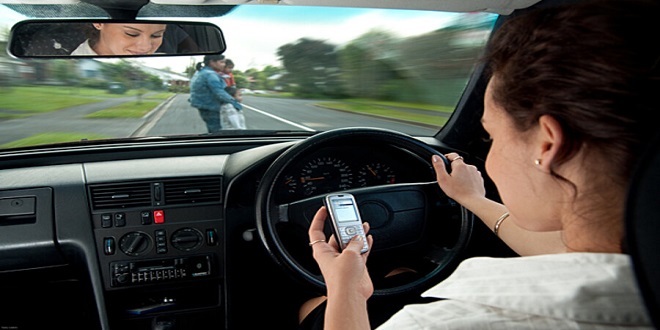60+ Texting and Driving Statistics 2021

Lately, folks all throughout the nation have shifted their consideration to the risks of texting and driving.
This shift in public discourse will not be stunning. The newest knowledge on the risks of distracted driving present that in 2018 a staggering 349 deadly crashes had been reported to have concerned distraction by mobile phone use.
What’s extra, crashes involving cell-phone associated exercise accounted for 14% of all distraction-related deadly crashes throughout the nation in that yr, leading to 385 deaths.
In response to the prevalence of texting and driving, the Nationwide Freeway Visitors Security Administration launched its U Drive. U Textual content. U Pay. marketing campaign to assist increase consciousness about these troubling numbers.
These 60+ texting and driving statistics will aid you perceive the present panorama, and what you are able to do to make the highway a safer place.
Statistics on Texting and Driving By Technology

Of all of the drivers concerned in deadly crashes brought on by mobile phone distraction, drivers beneath 30 years previous account for these probably to be utilizing a mobile phone on the time of the incident.
In a 2019 research by the AAA Basis for Visitors Security, knowledge indicated that in comparison with all drivers, these between ages 19 to 24 had been:
- Most definitely maintain and discuss on a mobile phone
- Most definitely to manually textual content or ship a textual content message or electronic mail
- Most definitely to learn on a mobile phone whereas driving
The identical research additionally indicated {that a} majority of millennials (these born between 1981 and 1996) engaged in no less than one dangerous habits (texting whereas driving, red-light operating, and dashing) whereas driving within the final 30 days. Millennials report dangerous behaviors reminiscent of dashing on the freeway and studying textual content messages at a good larger frequency than Gen Z drivers born after 1996, which earn millennials the highest spot because the worst behaved drivers in the US.
The latest knowledge from the Nationwide Freeway Visitors Security Administration additionally signifies related traits. 34% of deadly crashes brought on by distracted drivers on their cell telephones contain drivers that had been 20 to 29 years previous — the very best proportion of any age bracket. It’s reported that for all deadly crashes involving distracted drivers utilizing cell telephones:
Distracted Drivers Concerned in Deadly Crashes
| Age | % of Drivers |
| 15–19 | 11% |
| 20–29 | 34% |
| 30–39 | 24% |
| 40–49 | 12% |
| 50–59 | 10% |
| 60–69 | 6% |
| 70–79 | 2% |
As you’ll be able to see, younger adults are among the worst offenders on the subject of distracted driving:
- 45.9% of drivers 16-18 years previous report studying a textual content message or electronic mail whereas driving up to now 30 days
- 34.5% of drivers 16-18 years previous report texting or sending an electronic mail whereas driving up to now 30 days
- 54.2% of drivers 19-24 years previous report studying a textual content message or electronic mail whereas driving up to now 30 days
- 49.7% of drivers 19-24 years previous report texting or sending a textual content message or electronic mail whereas driving up to now 30 days
It’s value noting that whereas younger drivers report excessive charges of texting and driving, it’s truly drivers ages 25-39 who report studying textual content messages most frequently. 56% of drivers age 25-29 report studying a textual content message or electronic mail whereas driving up to now 30 days.

Statistics on Teenagers Texting and Driving
Teen drivers are the fourth most prevalent age group to make use of cell telephones whereas driving.
In 2017, the Nationwide Freeway Visitors Security Administration reported that:
- 9% of all teen motorized vehicle crash deaths contain distracted driving
- 9% of distracted drivers concerned in deadly crashes are teenagers 15 to 19 years previous
- 8% of youth drivers 15 to 19 years previous concerned in deadly crashes had been reported as distracted on the time of the incidents
- 52% of individuals killed in teen distraction-related crashes are teenagers 15 to 19 years previous
Texting and Driving Statistics by Gender
texting and driving by way of a gendered lens reveals some attention-grabbing findings on the variations between female and male distracted driving habits. In 2015, knowledge indicated the next:
Feminine Distracted Driving Habits
- 50% of feminine drivers ages 45 to 54 are the probably to say that they’d use an app designed to dam cellphone calls and textual content messaging whereas driving
- 79% of females are very more likely to intervene when the driving force of their car is sending textual content messages or emails whereas driving
- 7% of feminine drivers ship textual content messages or emails whereas driving no less than among the time
- 81% of feminine drivers by no means ship textual content messages or emails whereas driving
- 9% of feminine drivers learn textual content messages or emails whereas driving no less than among the time
- 76% of feminine drivers by no means learn textual content messages or emails whereas driving
- 87% of feminine drivers by no means use smartphone apps whereas driving
- 79% of females are very more likely to intervene when the driving force of their car is sending textual content messages whereas driving.
Male Distracted Driving Habits
- 71% of males are very more likely to intervene if the driving force of their car is sending textual content messages or emails whereas driving
- 9 % of male drivers ship textual content messages or emails whereas driving no less than among the time
- 79% of male drivers by no means ship textual content messages or emails whereas driving
- 13% of male drivers learn textual content messages or emails whereas driving no less than among the time
- 73% of male drivers by no means learn textual content messages or emails whereas driving
- 80% of male drivers by no means use smartphone apps whereas driving
It seems that ladies usually tend to: intervene if their driver is texting whereas driving; by no means ship textual content messages whereas driving; and by no means learn textual content messages whereas driving when in comparison with their male counterparts.
Causes That Folks Textual content and Drive
There are a selection of causes that immediate folks to interact in distracted driving on the highway. Work-related messages usually tend to immediate drivers to textual content and drive, over private or social messages. These are the most well-liked motivators:
- The message is vital (43%)
- The message is work-related (9%)
- The message is private or social (8%)
- The particular person the driving force is messaging is vital (8%)
- The motive force must report a visitors crash or emergency (6%)
- The message makes or responds to a fast or quick message or name (4%)
- The motive force wants instructions or different data (4%)
In terms of how folks price their driving talents, experiences point out that drivers are overconfident of their means to textual content and drive, although it makes them nervous when others do:
- 31% of drivers report no distinction of their driving after they textual content
- 34% of drivers report being distracted or not as conscious of issues when texting and driving
- 12% of drivers report they drive slower whereas texting and driving
- 86% of individuals point out that they’d really feel very unsafe if their driver was sending textual content messages or emails whereas driving
- 81% additionally report that they’d really feel very unsafe if their drivers had been studying texts or emails whereas driving
- 47% of individuals report that they’d really feel secure if their drivers used a hands-free machine to speak on a mobile phone whereas driving
Conditions That Stop Drivers From Texting and Driving
Information signifies that drivers are much less more likely to textual content and drive if:

Texting and Driving Legal guidelines
In the present day, 48 states, the District of Columbia, Puerto Rico, Guam, and the U.S. Virgin Islands all have a ban on texting when driving. Nevertheless, distracted driving legal guidelines and enforcement fluctuate from state to state.





